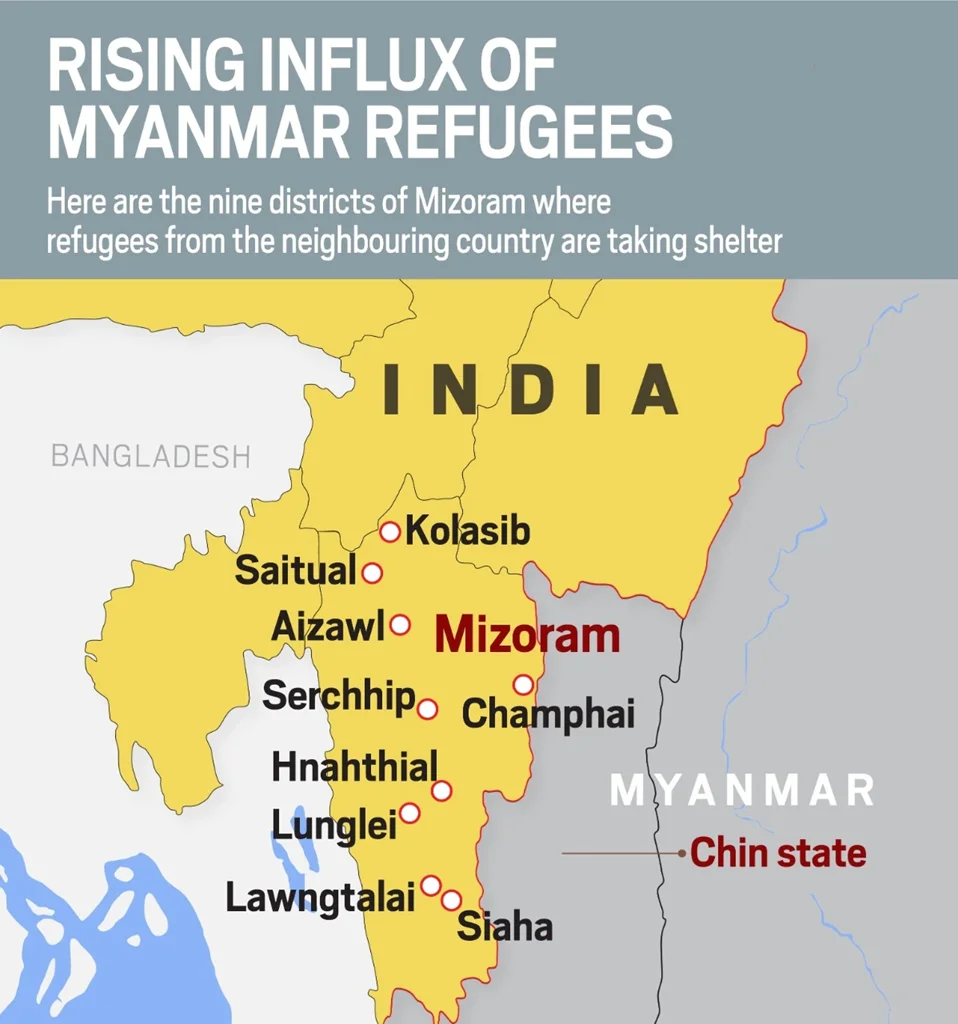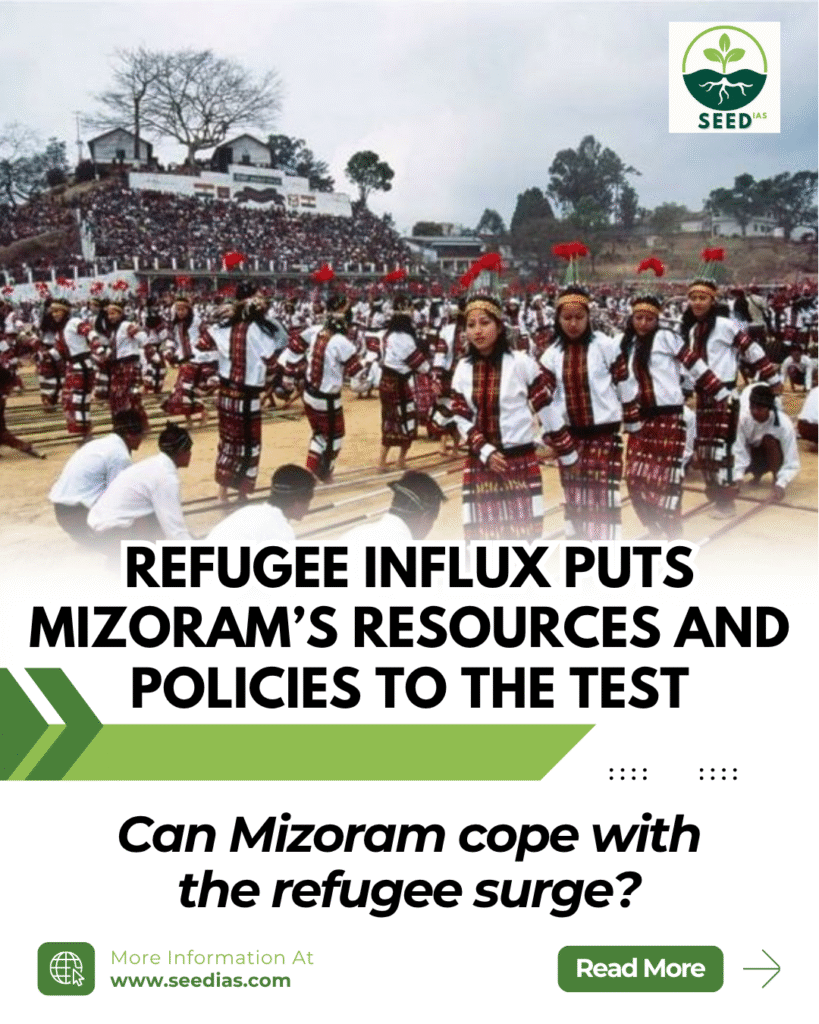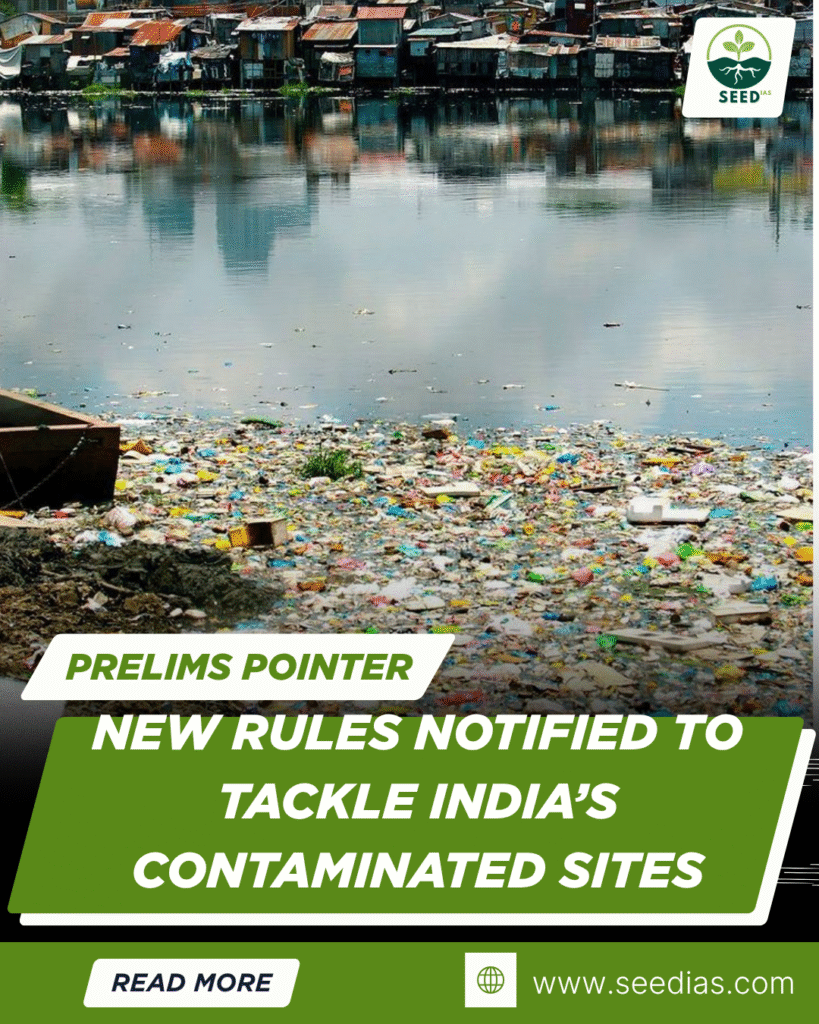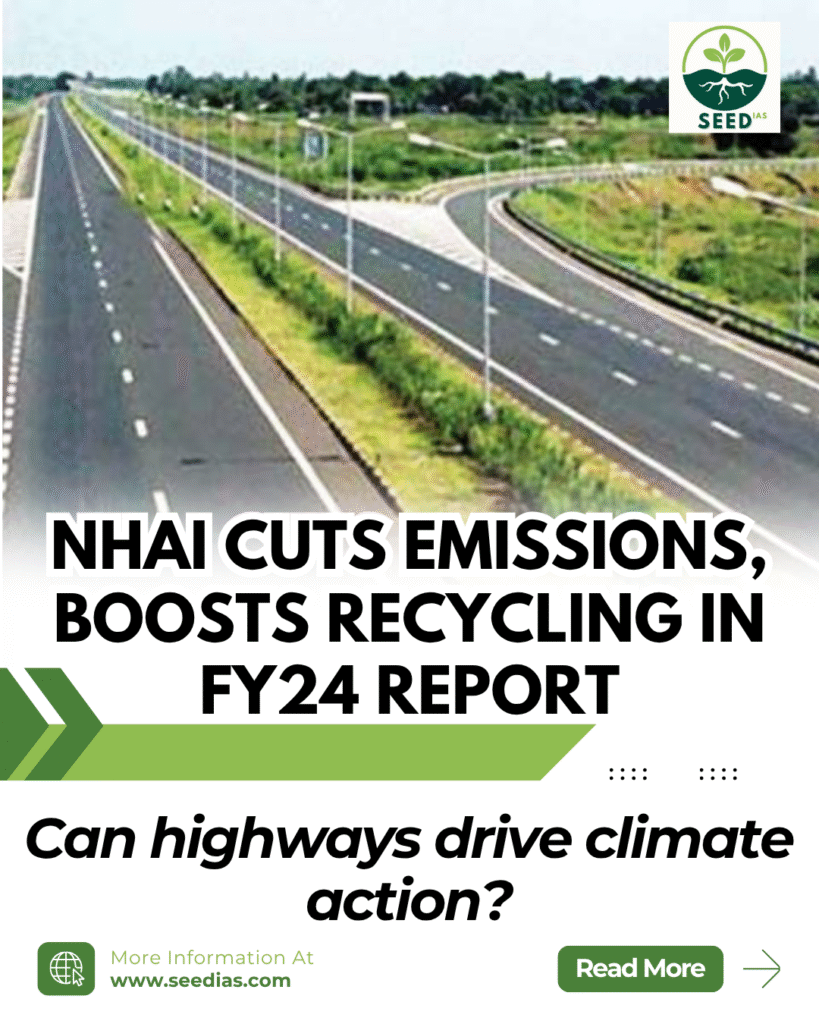Why in NEWS
Mizoram faces mounting pressure from a growing refugee influx since the 2021 Myanmar coup. In early 2025, over 4,000 Chin refugees fled to Mizoram, adding to existing populations from Myanmar, Bangladesh, and Manipur—raising humanitarian, legal, and policy concerns.
Key Terms / Concepts
| Term | Explanation |
|---|---|
| Refugee | A person fleeing persecution due to race, religion, nationality, social group, or political opinion, as per 1951 UN Convention |
| Asylum Seeker | Someone seeking refugee status but whose claim is pending |
| Free Movement Regime (FMR) | 1968 Indo-Myanmar arrangement allowing tribal communities to cross borders within a defined limit |
| UNHCR | United Nations High Commissioner for Refugees, offers limited protection to refugees in India |
| Foreigners Act, 1946 | Indian law under which refugees and foreign nationals are regulated |
| Mizoram Household Register Bill, 2019 | State bill to track and identify foreign nationals, refugees, and migrants |
News Summary
| Factor | Details |
|---|---|
| Ethnic Ties | Mizo-Chin-Kuki-Zo shared ethnic identity enables grassroots support for Myanmar, Bangladeshi, and Manipur refugees |
| Civil Society Support | YMA, churches, and locals offer food, shelter, and essential aid |
| Mizoram Government Stance | Refuses deportation on humanitarian grounds but faces rising local pressure over resources and legality |
| Centre’s Support | Only ₹8 crore in aid provided—seen as inadequate by State |
| Village Restrictions | Some localities have limited refugee movement/trade citing security concerns |
Legal and Policy Framework
| Aspect | Explanation |
|---|---|
| India’s Legal Status | Not a signatory to 1951 UN Convention or 1967 Protocol; no national refugee law |
| Current Governing Laws | Foreigners Act (1946), Passport Act (1920), and Entry Rules (1950) govern refugees as foreign nationals |
| UNHCR Role | Registers asylum seekers, but without state recognition, refugees lack access to services and documentation |
| FMR Implementation | Allows border crossing for 10 km with biometric QR passes; monitored by Assam Rifles and State officials |
| Mizoram Household Register Bill | Aims to track all residents and distinguish locals from refugees or migrants; pending Presidential assent |
Challenges Faced by Mizoram
| Category | Issues |
|---|---|
| Infrastructure | Overcrowded, makeshift shelters; poor sanitation and limited access to healthcare, education |
| Law and Order | Risk of smuggling, undocumented movement, and social unrest |
| Human Rights | Need for protection against trafficking, especially for women and children |
| Administrative Capacity | Limited state-level mechanisms to process refugee claims or support integration |
| Centre-State Coordination | Lack of cohesive national policy strains state capacity and response efforts |

Way Forward: Policy Recommendations
| Area | Recommendations |
|---|---|
| Legal Reform | Create a national refugee law distinguishing refugees from illegal migrants; ensure protection under international humanitarian standards |
| Institutional Mechanism | Establish a refugee coordination task force (Home, External Affairs, UNHCR, Mizoram) for status adjudication and logistics |
| State-Level Identification | Fast-track Mizoram’s Household Register Bill to regulate and monitor non-locals |
| Camp Infrastructure | Build temporary shelters with NDMA/UNHCR support; track refugee data for service planning |
| Community Integration | Incorporate refugees into local development schemes; safeguard vulnerable groups |
| Border Security | Deploy Smart Fencing for monitoring while preserving humanitarian access; strengthen local intelligence without profiling |
In a Nutshell
Memory Code – HEART SAFE
Humanitarian support
Ethnic ties leveraged
Asylum recognition needed
Refugee law reform
Temporary shelters
Security with compassion
Administrative coordination
FMR enforcement
Equitable central assistance
Prelims Practice Questions
- Which of the following statements are correct about the Free Movement Regime (FMR)?
- It permits border residents from India and Myanmar to travel up to 40 km into each other’s territory without a visa.
- It is intended to preserve ethnic ties and support India’s Act East Policy.
- It allows free movement for all Indian nationals.
a) 1 and 2 only
b) 2 only
c) 2 and 3 only
d) 1, 2 and 3
- As per international law, a person is granted refugee status based on which of the following factors?
a) Economic hardship
b) Fear of persecution on political or religious grounds
c) Natural disaster
d) Educational opportunity - Which of the following Indian laws is primarily used to regulate foreign nationals, including refugees?
a) Citizenship Act, 1955
b) Foreigners Act, 1946
c) Indian Penal Code, 1860
d) National Security Act, 1980
Mains Questions
- Discuss the legal and humanitarian challenges faced by India in managing refugee inflows, particularly in the absence of a national refugee law. (GS2 – International Relations / Governance)
- Examine the role of ethnic identity in shaping Mizoram’s response to refugee inflows. What are the implications for India’s internal security and foreign policy?
Prelims Answers & Explanations
| Qn | Answer | Explanation |
|---|---|---|
| 1 | b) 2 only | Originally 40 km, now reduced to 10 km; not open to all Indians, only tribal border residents |
| 2 | b) | Refugee status is based on fear of persecution for reasons like race, religion, or political opinion |
| 3 | b) | The Foreigners Act, 1946 governs the entry, stay, and exit of foreigners including refugees in India |
















